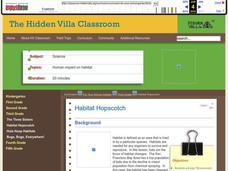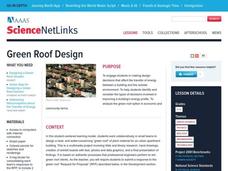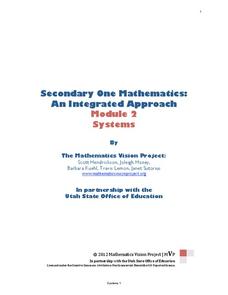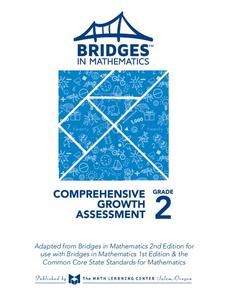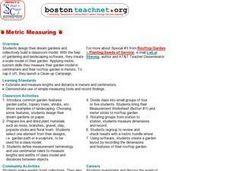Curated OER
Where Do You Live?
Students discuss the community in which they live. They take an observation field trip and then use paper and boxes to design and construct a model of their community.
Curated OER
Neighborhood Map Machine
Second graders study building placements in a neighborhood. They discuss businesses, roads, houses, rivers, police/fire stations, and use Neighborhood Map Machine to create a new map. They complete an exploratory map and community of...
Curated OER
Families and Neighborhoods
Students explore the concept of community. In this community lesson, students explore the cultural flavor of their neighborhoods as they discuss the history of their neighborhoods and draw pictures of their family and a building in their...
Curated OER
Working Together As a Team
Students examine the need for rules to keep order at home, in school, in communities, and in the country using trade books and teamwork activities. They work in cooperative groups to define a positive learning community by writing a...
Curated OER
Habitat Hopscotch
Third graders explore animal characteristics by participating in a bat environment game. In this natural habitat lesson, 3rd graders identify the physical anatomy of a bat and discuss their eating and sleeping habits. Students conduct a...
Curated OER
Star Student of the Week Letter
Honor each individual in your class by setting aside a week for each learner. Send out a copy of this letter and the materials listed in it each week to the parents or guardians of a particular pupil.
Science NetLinks
Green Roof Design
Green roofs aren't just eco-friendly — they are literally green with trees. Groups learn about the concept of green roofs in order to be able to design one. The groups design a 5,000-square-foot green roof for a fictional apartment row...
Overcoming Obstacles
Pass It On!
Inspire teamwork in your classroom with a fun group activity. Peers pass a penny from the back of their hand to their classmate's hand, who passes it down the line, and see who wins the competition.
PBS
Finding Story Ideas
Pitch your best news story to your news team, or the peers in your journalism class, with a lesson about finding, reporting, and presenting a story. After watching clips of different examples, as well as strategies for finding...
Bolton Healthy Schools
Deal with Poetry
The stated goal of this unit is to use poetry to "improve the emotional health of young people." Budding poets read and then supply their own lines for poems that deal with alienation, loneliness, and rejection.
Mathematics Vision Project
Module 2: Systems of Equations and Inequalities
The brother-sister pair Carlos and Clarita need your class's help in developing their new pet sitting business. Through a variety of scenarios and concerns presented to the siblings, the learners thoroughly explore systems of equations...
Bridges In Mathematics
Grade 2 Comprehensive Growth Assessment
Need to know if your students comprehend all the Common Core standards covered in second grade? This growth assessment will let you know. Find out if your second graders can add/subtract, tell the time, read a bar graph, know their...
US Institute of Peace
Perspectives on Peace
Is peace simply the absence of war, or is there more to the story? Young social scientists define peace in the second installment of a 15-part series. Groups work together to explore cultural concepts of peace and the peacemaking process...
YMCA
Turning Courtrooms into Classrooms
Turn the class into the next episode of Law & Order! Scholars work together to create a mock trial over the course of several weeks before going before a judge for the case performance. They take on different roles, go through...
Curated OER
Out of Site
Students determine the benefits of a school Web site for parents, teachers and student. They analyze the role of school Web sites in building community, and outline and design sections for their own school's Web site.
Curated OER
Metric Measuring
Young scholars design their dream gardens and work together to build a class model. They use software to create a virtual model. They only use metric measurements.
National First Ladies' Library
Michigan vs. Ohio State: A Serious Rivalry!
Middle schoolers discuss and research the pros and cons of school rivalries. In particular, they study the Michigan-Ohio State rivalry. Through their research, they think about how media accounts of college football games can be shaped...
Curated OER
Growing up in Las Vegas; Memories of Childhood in the Neon City
Learners investigate the history of Las Vegas through conducting interviews. In this oral history lesson, students locate and speak with older residents of Las Vegas in order to gain a better understanding of the city....
Curated OER
One Person's Garbage, Another Person's . . .?
Young scholars list many, different and unusual items that could be constructed out of refuse and found objects.
Curated OER
Our Barrio: Our Community/Adams & Normandie
Third graders examine various structures and people, including the region of Adams and Normandie, in Los Angeles. They conduct Internet research, and identify and locate features in the Adams/Normandie region during the past 60/70 years.
Curated OER
House Keys: The Architectural Features of Victorian Homes and Buildings
Young scholars analyze Victorian architectural patterns wit regard to materials, doorways, windows, towers, bays, roofs, and decoration. Students discern varying architectural traits by studying Victorian era pictures and drawings and...
Curated OER
Community Foundations and You
Students list and explain the functions of the three sectors of the American economic system. They identify foundations as part of the third sector. They summarize the function and purpose of their local community foundation. They apply...
Curated OER
Making Birthday Calendars for Community Organizations and Businesses
Students create birthday calendars using The Print Shop computer program. They produce and market a product, replicating a work environment.
Curated OER
Looking at the Community Tree
Third graders review the characteristics of living and nonliving organisms. As a class, they observe a tree and describe the interactions between the living and nonliving organisms surrounding it. To end the activity, they ask a...




